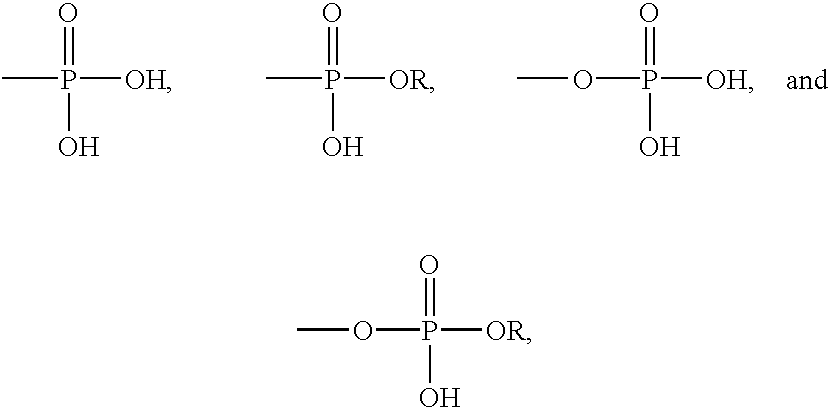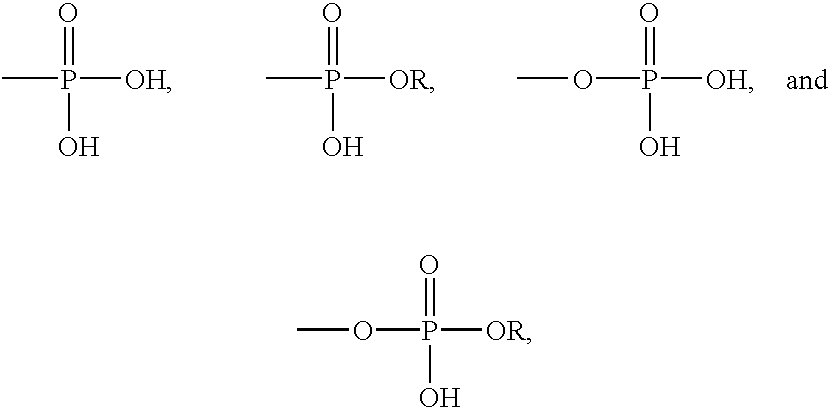Endodontic sealing compositions and methods for using such compositions
a technology of endodontics and compositions, applied in the field of adhesive resins, can solve the problems of difficult to achieve fine adaptation to the canal wall, difficult to completely seal the root canal from all ingress of fluids, laborious "later condensation, etc., and achieve the effect of rapid completion of the endodontic process, easy dredging, and convenient formation of channel holes
- Summary
- Abstract
- Description
- Claims
- Application Information
AI Technical Summary
Benefits of technology
Problems solved by technology
Method used
Image
Examples
example 2
[0107] An adhesive antimicrobial dental composition was formed having the following components and concentrations:
3 Percent by Weight Component of the Mixture calcium hydroxide 10.0% bis-glycerol methacrylate phosphate 5.0% urethane dimethacrylate 57.0% triethylene glycol dimethacrylate 6.0% titanium dioxide 1.0% calcium phosphate tribasic 10.0% dimethyl amino ethyl methacrylate 0.5% camphorquinone 0.2% barium sulfate 10.3%
example 3
[0108] In this example, an adhesive antimicrobial dental composition is formed having the following composition:
4 Percent by Weight Component of the Mixture bis 2-hydroxy ethyl methacrylate 10.0% barium hydroxide 25.0% calcium phosphate tribasic 5.0% benzoin ethyl ether 0.4% N-methylethanol amine 0.5% glycerol dimethacrylate 59.1%
example 4
[0109] In this example, an adhesive antimicrobial dental composition is formed having the following composition:
5 Percent by Weight Component of the Mixture strontium oxide 30.0% camphorquinone 0.5% diethyl amino ethyl methacrylate 0.5% bis glyceryl methacrylate phosphate 69.0%
PUM
| Property | Measurement | Unit |
|---|---|---|
| time period | aaaaa | aaaaa |
| time period | aaaaa | aaaaa |
| time | aaaaa | aaaaa |
Abstract
Description
Claims
Application Information
 Login to View More
Login to View More - R&D Engineer
- R&D Manager
- IP Professional
- Industry Leading Data Capabilities
- Powerful AI technology
- Patent DNA Extraction
Browse by: Latest US Patents, China's latest patents, Technical Efficacy Thesaurus, Application Domain, Technology Topic, Popular Technical Reports.
© 2024 PatSnap. All rights reserved.Legal|Privacy policy|Modern Slavery Act Transparency Statement|Sitemap|About US| Contact US: help@patsnap.com










